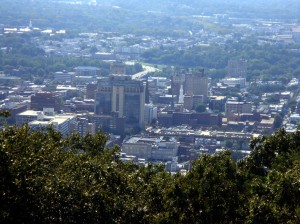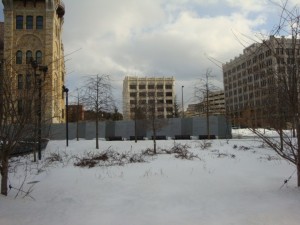I just read a very interesting article from the York Daily Record comparing York and Lancaster. I found the article very thought-provoking as a former Lancaster City and suburban Lancaster resident. I also am somewhat familiar with York.
Of course, I will share my opinion with you since that IS what I do and offer some advice for York in the process. There is a link at the bottom of this piece where you can read this article for yourself.
I must agree with Sonia Huntzinger, the Director of Downtown Inc. in York. A comparison is not really fair. Lancaster and York have some similarities and they are only about 30 miles apart, but that is about where it ends. There are strategies York can use that Lancaster has already perfected and customize them for York, without reinventing the wheel. BUT York must also embrace itself and be true to its own history.
The first thing that jumps out at me is that York needs to move on from its past. Race riots in the late 60’s were 40 years ago and our nation and York have changed since then. York was not the only city in America to have race riots and bad ones. Pittsburgh had some humdingers and can anybody remember Watts!?! But again, that is ancient history and holding on to a negative event from the past is unhealthy! Let it go!
Secondly, York could be very successful and they are making great strides to that end. Heritage Tourism in a historic city like York must be fully embraced. It certainly worked for Lancaster and it will most certainly work for York. Lancaster has been at this far longer so they are light years ahead of York because of a HUGE head start.
More than 4 million people visit Lancaster each year as it is one of Pennsylvania’s largest tourist destinations. York should piggy back on that phenomenon and say to those tourists visiting Lancaster, “Hey! Come on over! York is only a short car ride away!” It would enhance the experience for both 18th century cities. (Lancaster being incorporated in 1742 and York being incorporated in 1787.) If you take away the Amish factor, there are people who would be interested in touring another “period city” that nearby!
Thirdly, stop looking at each other as “foes” (White Rose vs. Red Rose) and look at each other as business partners. Frankly, cooperation is a win-win for everybody. That includes Harrisburg. These three metropolitan areas are contiguous and should be marketed as a Triad like Winston-Salem, Greensboro & High Point, NC. Between the Harrisburg, Lancaster and York metropolitan areas (latest population estimates) you have 536,919 HBG + 507,766 LANC + 424,583 YORK = 1,469,268 people! This is a more accurate picture of what you really have to work with and market to.
Leveraging all three areas as one tourist destination would totally make sense and everyone would benefit. Combine resources folks! Many hands make light work and all that. From a financial prospective, during a recession, working together makes sense. Combine budgets, cut costs and everyone benefits.
Fourth, I will disagree with Sonia Huntzinger on this point (no offense, Sonia). She stated in the article that Central Pennsylvania can not support another arts district like Lancaster’s. With a draw of 1,429,268 people you certainly can. Furthermore, Harrisburg is going great guns in Midtown to set up a big arts community there as well (I guess they didn’t get the memo, haha). Each city should have an individual, size appropriate, arts area. The “arts” are a huge tool in the redevelopment process.
Fifth – “Eds and Meds” are vital to redevelopment. I do not care if York Hospital and College are not downtown. They are large employers and stakeholders whether they like it or not. As downtown York prospers, so will they. Scranton and Wilkes-Barre have made their colleges partners in their redevelopment. A healthy York will help York College attract more students and help the hospital attract more young people as employees. You want more young people downtown like Lancaster? You must get the hospital and college onboard.
Sixth – the perceived safety issues in York need to be overcome. Sorry but there are stabbings/shootings in Lancaster too. Anybody who says not is delusional. Lancaster has a lower crime rate than York because redevelopment does that. In addition, Lancaster has a surveillance camera system in place and a noticeable police presence downtown. Until York can get those numbers down, they need to beef up police foot patrols in the downtown to make people feel safer. Those surveillance cameras only cost $9,000 a piece, installed. They might be something for York to consider going forward. Saying we have no money is not a solution. Find money to pay for foot patrols and cameras. There are grants out there. You can not afford to not spend money on public safety if you want to be like Lancaster. You must overcome the crime stigma yesterday!
Lastly, private sector funding is the wave of the future because of budget constraints with our state and federal governments. There is still money available but finding ways to involve the private sector is becoming increasingly important. Large employers in York County need to be made to understand the importance of “giving back” and that they will reap benefits by doing so. Groups like YorIT will also play an increasing role in moving York forward (http://www.yorit.org/).
Here is a link to the article that spurred my post:
http://www.ydr.com/ci_17425140?source=rss_viewed
It is vital that Pennsylvania’s cities be robust and growing.
 Reading officials are hoping that a visit Wednesday from the state’s community and economic development secretary will result in millions of dollars in grant money to build a thriving business district downtown.
Reading officials are hoping that a visit Wednesday from the state’s community and economic development secretary will result in millions of dollars in grant money to build a thriving business district downtown.









